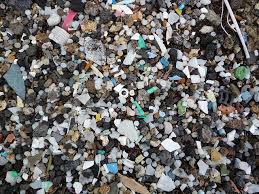
99% of Plastic in Ocean Missing
Millions of tons. That’s how much plastic should be floating in the world’s oceans, given our ubiquitous use of the stuff. But a new study finds that 99% of this plastic is missing. One disturbing possibility: Fish are eating it.
If that’s the case, “there is potential for this plastic to enter the global ocean food web,” says Carlos Duarte, an oceanographer at the University of Western Australia, Crawley. “And we are part of this food web.”
Humans produce almost 300 million tons of plastic each year. Most of this ends up in landfills or waste pits, but a 1970s National Academy of Sciences study estimated that 0.1% of all plastic washes into the oceans from land, carried by rivers, floods, or storms, or dumped by maritime vessels.
Some of this material becomes trapped in Arctic ice and some, landing on beaches, can even turn into rocks made of plastic. But the vast majority should still be floating out there in the sea, trapped in midocean gyres—large eddies in the center of oceans, like the Great Pacific Garbage Patch.
To figure out how much refuse is floating in those garbage patches, four ships of the Malaspina expedition, a global research project studying the oceans, fished for plastic across all five major ocean gyres in 2010 and 2011. After months of trailing fine mesh nets around the world, the vessels came up light—by a lot.
